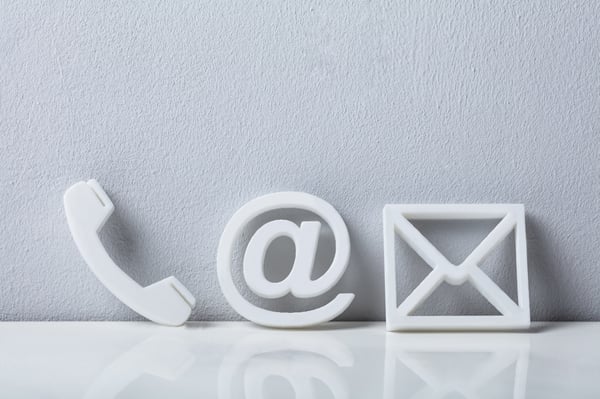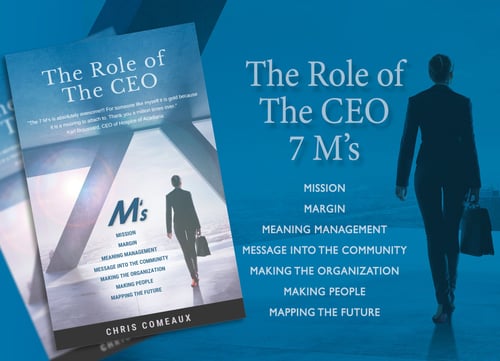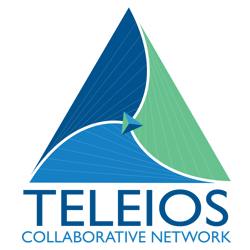7 min read
Contacts: The 5th Fundamental of Every Great Organization System
By: Chris Comeaux on 5/17/19 11:49 AM

 This is our 5th installment of the 6 fundamentals of every great organization system.
This is our 5th installment of the 6 fundamentals of every great organization system.
Please read our prior blogs on the other 4 Fundamentals we have covered thus far:
The Unexpected Fundamental
I have a standing bet that if someone discovers a new fundamental I owe them $100. For years, I taught that there were five fundamentals of every great organization system. Then a really smart Foundation Director at Hospice of Acadiana said, “What about contacts?” And you know what? I happily paid her $100 because contacts are absolutely part of every great organization system.
Without a tool to help with contacts, you will find yourself looking for phone numbers or names through various emails, business cards, or sheets of paper. Luckily, Outlook and many other tools can help quite a bit in this area. Outlook is great at remembering an email address if you have emailed someone before, but the point of calling this a Fundamental is to challenge you to take that ability a step further and identify a tool (or tools) by which you will keep track of your contacts – a repository or database of those contacts so that, when you need them again, you have them handy no matter where you are.

Hardwiring the Process
Personally, I utilize Outlook contacts as my repository for all names and respective phone numbers. When someone shares their contact information with me via an email, I create a contact and put it in my contact list. It’s important to hardwire the task of putting contacts into whatever system you’re using immediately. Doing this when you identify a contact you want to keep saves a tremendous amount of time in the long run, as you won’t have to dig through emails or texts, and it immediately frees up mental space, which is a key reason for having a great organization system.
While there are many sophisticated software systems that manage accounts and contacts, this is not meant to be a think piece on CRMs (Customer Relations Management Systems). CRMs are excellent tools for sales people and relationship managers to comprehensively maintain contacts and relative information about key relationships. In fact, the CRM industry is projected to grow to over $80B in the next several years. But for our purposes in creating a contact-keeping system, we want to be more basic in our thinking. Contacts are the most basic ingredient in any good CRM system. While everyone does not need the comprehensive model a CRM offers, everyone does need a solid system for organizing contacts.
Tools for Success
In our tech-driven age, there are many great new tools to simplify this process. As I mentioned earlier, I use Outlook to store my contacts, and to make the entry of contacts simple, I use an app called CamCard, which allows me to scan business cards and sync the information to my Outlook contacts. Because I always have access to the app on my phone, I can use this feature anytime and not have to delay putting in a new contact. It also eliminates the need to keep up with paper and cards and potentially lose them before saving them. A Google search will reveal the top 10 apps for iPhone and Android that employ these features, and you can choose an app that works best for you.

The Other Angle: How Do People Reach Me?
When thinking about contacts, we often only think of how we reach others, but it’s important to consider how others reach you as well. Getting someone information on how to contact you is so basic that many of us have never even given it any thought.
How someone contacts you may vary based on your relationship to that person. For example, you may want a client to have access to you for needs so you encourage them to reach you quickly by text or call. For internal contacts, such as peers, coworkers, or teams that you manage, it may prove easier to have a system by which they contact you based on what they need. Because we carry our phones and can be contacted at any time, it’s important to keep boundaries in place so that we can maintain our focus on essential tasks. When our internal communication is organized, we become more responsive to external communication and managing relationships at a greater capacity.
Internal Communication
Below is a checklist I share with my own team members. This list establishes “rules of the road” in terms of how to get in touch with me. Without these types of boundaries established, you open yourself up for all sorts of communication coming in to you with no rhyme or reason. Someone may text you, another will call, another will email, but none with any semblance of prioritization.
- If you need me right away:
- Text me saying you need me right away
- Call my cell phone twice. I call this my bat signal – it tells me I need to step out of whatever I am doing and take this call.
- If you need me in the next hour, send me a text telling me so and how to get back with you.
- If you need to download to me something that I need to see quickly but no response is needed, send me a text that starts with “FYI”.
- If you need me to get back with you within 24 hours, send me an email and utilize the “!” function, as I sort on those emails first.
- If you just need to get something in my queue and I can get back with you within the week, send me an email. I clear out all emails by the end of the week (this is covered in the 6th Fundamental).
What is your system of preference of how to be contacted? Take some time to establish your preferences and communicate them to your team, as leaving them unstated will lead to a barrage of communication and prevent you from prioritizing easily.
Up Next
Be sure to join us for our next installment and the last in this series which will cover the greatest fundamental to hold each piece of the organization system together.
Chris Comeaux, President / CEO of Teleios Collaborative Network
Download the eBook below and unlock your true self-leadership potential.
Teleios University (TU)
Program Launch: January 20-21, 2020
Discover More

An organizational model that allows not-for-profit hospices (Members) to leverage best practices, achieve economies of scale and collaborate in ways that better prepare each agency to participate in emerging alternative payment models and advance their charitable missions.
Related Posts
The Weekly Review: the 6th Fundamental of every great organization system
This is the last installment of the 6 Fundamentals of every great organization system. In prior...
The calendar the 1st fundamental of a great organization system.
The calendar the 1st fundamental of a great organization system. In our last blog we mentioned that...
The second fundamental: the task list
Our current blog series focuses on what I refer to as: “The 6 fundamentals needed for a great...




